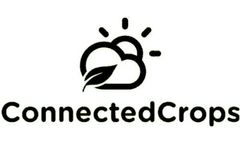Overhead Irrigation Articles & Analysis
6 articles found
Emergency Water Stages in the Unforgiving Dry Climate of the Canadian Prairies Many businesses in the prairies rely heavily on rain and melting snow for their water supply. But right now, Alberta and Saskatchewan are facing record-low precipitation. The provinces of Alberta and Saskatchewan have struggled with droughts and water shortages for the last three years, and this year, the world is ...
A greenhouse organic tomato and cucumber grower saved his crop during extreme drought with Sensoterra sensors, and improved yield with soil moisture data. With extreme droughts occuring more frequently, Danny Monté, Forecast and Quality Administration and Quality Control Manager at AC Hartman BV, relies on Sensoterra soil moisture sensors to support irrigation decisions for greenhouse ...
Reporter Matthew Grassi from Growing Produce has just published an article about the choice growers face when switching from overhead to drip irrigation. They can save water and labor while deploying more sustainable and automated practices, but some may still be waiting to move forward. The article is titled, “Will Drip Replace Overhead ...
ByFarm(x)
Knowing how much soil moisture (see definition) is available in real-time can lead to: higher yields better product quality improved plant vigour reduction in disease more effective use of water (water efficiency) reduced irrigation costs Considering the time it takes to irrigate, it makes sense to invest in knowing soil moisture levels and improve ...
Although subsurface drip (SSD) is used as a water-efficient alternative to overhead irrigation in many crops, the effects of SSD on the distribution of bolls on cotton plants (Gossypium hirsutum L.) have not been thoroughly examined. ...
Three experiments were conducted at two Georgia locations in 2004 and 2005. Treatments consisted of overhead irrigated, nonirrigated, SSD matched to overhead irrigation rates (SSD Matched), and SSD based on soil water (SSD Fed). ...





